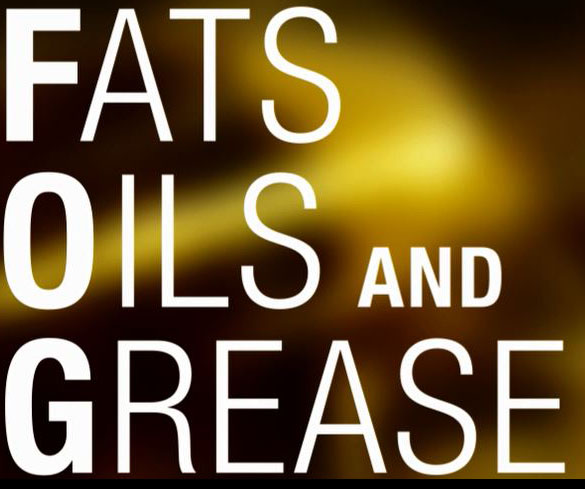MSD Project Clear is urging the community to take action this holiday season by properly disposing of fats, oils, and grease (FOG), instead of putting them down the drain.
MSD Project Clear is urging the community to take action this holiday season by properly disposing of fats, oils, and grease (FOG), instead of putting them down the drain.
FOG from butter, gravy, cooking oil, and sauces can look as harmless as liquids, and many people dispose of these substances down their drains. When they cool, however, FOG becomes thick and sticky, adhering to the pipes of our sewer system and potentially causing clogs, basement backups and sewer overflows. FOG can also cause issues in the pipes of your home, producing clogs or backups.
FOG gets into our sewer collection system mainly from residential customers pouring the substances down their drains. Fats, oils and grease are a byproduct of cooking and are mostly found in the following:
- Meats
- Cooking oil
- Lard or shortening
- Butter or margarine
- Mayonnaise
- Food scraps
- “Hidden oils” such as salad dressings, syrup, batter, cheese, and whipping cream
The MSD Project Clear Fats, Oils and Grease (FOG) program was designed to reduce the possibility of sewer pipe blockages and overflows by educating the community about how FOG affects the sewer system and how customers can properly dispose of these substances. More than any other time of year, fall and early winter see more of these types of issues, particularly around the holiday cooking season. Since 2004, MSD has seen a nearly 80% reduction in grease-related sewer overflows, due in part to the community’s help in preventing FOG from entering our sewer system. MSD asks the community for its help in continuing this trend, and reminds everyone not to FOG up our pipes this holiday season.
To work effectively, sewer systems need to be properly maintained. MSD PC encourages all customers to do their part in maintaining their home’s system and to use proper disposal methods as provided below.
What Can You Do?
· Wipe visible FOG and food scraps from plates, pots, and utensils into the trash for disposal.
· Never pour FOG down your sink drain, garbage disposal, or the sewer system
· COOL IT, CAN IT, & TRASH IT.
o Pour cooled FOG into a container such as empty pet food, vegetable, or coffee cans. Allow the material to cool and solidify.
o Secure the lid and place it in the trash when full. Lids are available at your local municipality or at MSD’s Administrative Offices.
· Encourage your neighbors to keep FOG out of the sewer system.
About MSD Project Clear
MSD Project Clear is the Metropolitan St. Louis Sewer District’s initiative to improve water quality and alleviate many wastewater concerns in the St. Louis region. MSD Project Clear will invest billions of dollars over a generation in planning, designing, and building community rainscaping and system improvements, along with an ambitious program of maintenance and repair and the disconnection of some residential downspouts in parts of St. Louis County’s separate sewer area from the wastewater sewer line. This work is part of an agreement between MSD and the United States Environmental Protection Agency.
The St. Louis region’s success with MSD Project Clear will only be possible through strong partnerships and clear communications with the public.
To learn more about the MSD agreement with EPA, please visit www.stlmsd.com/aboutmsd/organization/consentdecree. For more information on MSD Project Clear, visit ProjectClearSTL.org or follow us on Twitter @ProjectClearSTL.
About the Metropolitan St. Louis Sewer District (MSD)
Created in 1954, the Metropolitan St. Louis Sewer District (MSD) works every day to protect the public’s health and the natural environment through effective wastewater and stormwater management strategies.
MSD is responsible for the public sewer system that homes and businesses connect to through lateral lines. Through a labyrinth of connected sewers, wastewater is transported to one of seven sewer treatment plants – nearly 7,000 miles of sewers in all. That is like going from St. Louis to New York City and back three times! Individual property owners are responsible for another important part of the system, the sewer lateral that connects a home’s plumbing to the public sewer in the street.


